 2012-02-23
2012-02-23
It has become a good tradition: November, 29th and 30th 2011 for the 8th time LayTec held its private seminar in Tokyo and Nagoya, Japan. New in-situ measurement approaches for multiple applications as well as product news were presen¬ted.
Prof. Sugiyama of University of Tokyo reported on successful strain compensation of InGaAs/GaAsP multiple quantum wells (MQWs) using both EpiRAS and EpiCurve® TT for novel solar cell applications on GaAs. Interestingly, the H2-purging and subsequent As-/P-stabilization of the InGaAs surface di¬rectly inf...
Continue reading →
2012-02-22
By Scott Patterson In the U.S., government and environment activists are pressuring its people to convert from using old traditional incandescent lamps to LEDs (Light-Emitting Diodes) and CFLs (Compact Florescent Lamps). The public resist the notion that their freedom of choosing the type of lights they can use being strip away. Radio talk-show and TV-show hosts have rebelled and said that the new policy is unconstitutional. The government has no rights to tell its people what kind of light they can use. This adaption process will take time as what we hav...
Continue reading →
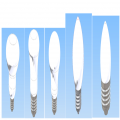 2012-02-17
2012-02-17
Source from : Chi Long Machinery Co., Ltd There are three kind methods of LED lamp heat-sink, incl. conduction, convection and radiation. The existed heat-sink design is focus on the conduction and convection for LED lamp. In the radiation aspect, many companies did not pay attention on it. But the radiation is a very important factor for LED lamp. The existed conduction heat-sink of LED lamp is just in view of the internal conduction only. That is conducting the heat of LED lamp to the radiator fin and to apply the radiator fin to bring the...
Continue reading →
2012-02-03
An average American town’s biggest expense, when excluded payrolls, typically lands on its reoccurring street lighting bill. LED, a prevalent technology now implemented as backlight for many electronic devices, such as Tablet PCs, Smartphones, TVs, and more, looks promising to cut expense by reducing electricity consumption up to 50% and maintenance required in streetlights. Culpeper, Virginia, a town of approximately 16,000 people recently erected two LED streetlights, with one on North Main Street and the other on Piedmont Street. A third LED streetlight i...
Continue reading →
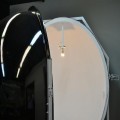 2012-02-02
2012-02-02
Gamma Scientific, pioneers in light measurement for over 50 years, will be showcasing their complete line of LED test and measurement solutions in booths 501 and 600 at the Strategies in Light conference in Santa Clara, CA from February 7-9, 2012. Attendees can visit the Gamma Scientific booths to view live demonstrations and learn how to optimize their LED testing for maximum performance and efficiency. Total Solutions for LED Testing Gamma Scientific offers high-performance spectroradiometers, spectrometers, integrating spheres, turnkey LED binning an...
Continue reading →
2012-01-17
By Scott Patterson Unquestionably the International Consumer Electronics Show (CES) at Las Vegas, Nevada, U.S.A. is focused on the new technologies. Among all these impressive new technologies, the highlights implementing LED technologies were Sony’s new Crystal LED technology and Korean maker’s application of OLEDs (organic light-emitting diode) on large-sized TVs. Sony’s Crystal LED technology creates a full-HD display using approximately 60 million LEDs as light source on a substrate. This new technology can have a nearly...
Continue reading →
 2012-01-13
2012-01-13
By Scott Patterson Who says crops can only be planted on vast farms in the Midwest. It is possible to grow crops in isolated city warehouses without sunlight and soil says LEDinside. By implementing LED artificial light source, this innovative idea of urban farming has been developed and quietly making progresses over the past decades. Most of these urban farmers are used to be nonprofit organizations, schools and restaurants, but a new generation of city farmers is gradually coming into existence. They are business motivated with ambition to take a chunk of the profit of ...
Continue reading →
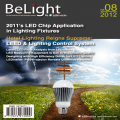 2012-01-13
2012-01-13
By Scott Patterson The requirement and impact on the consumer side: The phase out of incandescent light bulbs begins on the January of 2012, the new standards require all light bulbs to be at least 25 percent more efficient whether it is domestically manufactured or imported. On the package it should label clearly its brightness and explain it life expectancy, energy efficiency and annual operating cost. The efficiency standards will only begin to take its effect on 100 watt incandescent light bulbs on January 1 and will gradually make its effect onto 75 watt and 60 watt on Jan...
Continue reading →
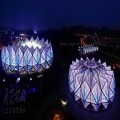 2012-01-09
2012-01-09
The 26th World University Games, also known as Summer Universiade, came to a wonderful end in the summer of 2011. There are around 20 venues in this 26th Universiade. Composed of three Main Stadiums, the Center Stadium of Universiade was the most impressive building designed in the theme of “Crystal”. It is LEDGOGHTM, a world-class LED lightscape creator that provided the LED lights and intelligent control systems with DC/DC converter - MBI6651 to present the light of Crystal. LEDGOGHTM is the winner of “Innovative Applic...
Continue reading →
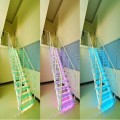 2012-01-03
2012-01-03
By Sanchez, Richmond Mozo
Are you aware that LED lighting gives the highest energy savings and lowest maintenance cost for commercial interior lighting applications? Energy consumption is reduced by up to 95% and consequently delivers an extremely short payback among several energy efficient technologies.
LED lighting systems installed in shopping malls, grocery stores, professional offices, hotels, restaurants, hospitals, airports, and casinos improve lighting immensely, aside from lowering energy consumption and minimizing carbon footprint. Lighting becomes more aestheti...
Continue reading →
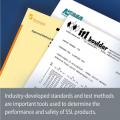 2012-01-03
2012-01-03
by Paul Williams
Greph Credit: U.S. Department of Energy
The Energy Independence and Security Act of 2007 put many changes into motion for the lighting industry. The most significant change is a required 25 percent increase in the energy efficiency of light bulbs. Since manufacturers are currently unable to increase incandescent bulb efficiency by such a large percentage, the end result is essentially the phased elimination of this type of bulb.
In January of 2012, the manufacture of 100-watt incandescent light bulbs that fail to meet the new efficiency standard wi...
Continue reading →
 2012-01-03
2012-01-03
by Paul Williams
Graph Credit:GE Lighting
According to LEDinside, by 2012 the nation (the U.S.) will start to save over 25 percent of electricity on lighting due to the law congress passed on regulating new light bulbs manufactured. Carbon emission is aimed to be reduced by millions of tons.
The traditional light bulb, the commonly known Thomas Edison’s original light bulb, unexpectedly transformed itself into a powerful sentimental symbol. With consumer anxiously worry about losing the familiar old bulbs and quickly find themselves upset with government...
Continue reading →
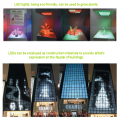 2011-12-23
2011-12-23
Measures have been passed by several governments around the world to phase out incandescent light bulbs for general use. The aim is to expand usage and spur technological development of more energy-efficient lighting alternatives, such as compact fluorescent lamps (CFLs) and light emitting diode (LED) lamps. Brazil and Venezuela began to phase them out in 2005, and the European Union, Switzerland, and Australia started to do the same in 2009. Similarly, other nations are planning scheduled phase-outs: Argentina, Russia, and Canad...
Continue reading →
 2011-12-14
2011-12-14
Introduction 2010 and 2011 were the debut years for China LED industry. Not only the numbers of MOCVD system increased from ~50 in 2007 to over 700 in 2011(see Fig 1), but also the LED industrial revenue has increased from the CNY$50 billion in 2007 to CNY$1,730 billion in 2011 (See Table 1). Figure 1. China MOCVD installed base projection. (source: GG LED and LEDInside) Among all, the LED chip manufacturing and the application segments grow the most rapidly with the CAGR of 65% and 61% respectively. The phenomena are not...
Continue reading →
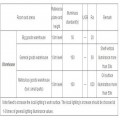 2011-11-25
2011-11-25
1. Characteristic of warehouse
As the integration of transportation, warehousing, freight forwarding and information industries modern logistics is a complex service industry, modern logistics is a product of economic globalization and play an important role in promoting economic globalization. Warehousing is logistics enterprises’ core component and important pillar. It plays a vital role in the logistics system. In recent years, Warehouseing’ s output growth rate continuous quick than the national growth rate of GDP, The growth of cargo throughput reached an average ...
Continue reading →
2011-11-17
To give you an idea of what the new generation of LED-based exterior lighting can mean to your projects, think back to what your life was like in 1990. That was over 20 years ago. Your cell phone, if you had one, was so big and heavy, carrying it probably qualified as an exercise program. Businesses and governments threw tons of dollars at something known ominously as Y2K, which was supposed to throw us back into the Stone Age. (It didn’t, but they still spent billions on new IT systems). The washing machine and dryer you bought that year? They’re probabl...
Continue reading →
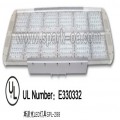 2011-10-31
2011-10-31
1. Introduction of standard badminton court Badminton court is rectangular court, with 13.4M length, 6.1M width for the doubles game, 5.18M width for the singles game, 14.723M diagonal line for doubles game,14.366M diagonal line for singles game. Badminton court was divided equally into two parts by horizontal line, divided longitudinally into the front court, midfield, back court. The front court is a area that between short service line and the net; The back court is from end line to long service line. Midfield is area that from short service line to long servi...
Continue reading →
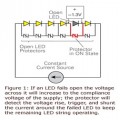 2011-09-02
2011-09-02
By Teddy To, Product Manager and Phillip Havens, Segment Manager • Littelfuse, Inc. As LEDs find their way into more outdoor applications they are at higher risk for ESD and other electrical transients. HB LEDs (those with sapphire or SiC substrates and in the future AlN and GaN substrates) are especially susceptible, and when the first LED in a string fails, the whole string goes dark. Few engineers know all the considerations of specifying circuit protection for LED strings. For example, a recent category of devices, called open LED protecto...
Continue reading →
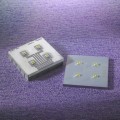 2011-03-24
2011-03-24
By Anita LaFond, Senior Editorial Manager, Constructive Communication, Inc. As demand for LED (light emitting diode) luminaries continues to grow, new thermal management technologies are allowing manufacturers to produce LEDs that have higher light output and longer lifespan. LEDs offer many advantages including low energy consumption, long service life (bulbs can last up to 40,000 hours or more), and environmental safety (they contain no mercury). The disadvantages of LEDs, such as higher prices than incandescent or fluorescent lighting, will dissipate as new man...
Continue reading →
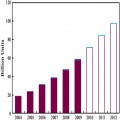 2010-05-28
2010-05-28
LED is revolutionizing humans lighting environments. There have been timelines established to replace incandescent or fluorescent lamps worldwide. However, the current white light LED is based on GaN semiconductor that is epitaxially deposited on either sapphire or SiC wafers. Due to the non-equilibrium growth of GaN lattice on mismatched Al2O3 substrate, or defects ridden SiC, there are ample dislocations (e.g. 109/cm2) that may reduce the internal quantum efficiency of photon emission. Worse still, the dislocations may propagate irreversibly upon heating. This is why LED will dim with time. In order to avoid LED chips from overheating, the heat blocking epoxy insulator on the circuit board is replaced by diamond like carbon (DLC). The result is a dramatic decrease of the chip temperature.
Continue reading →
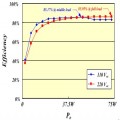 2010-05-06
2010-05-06
This paper presents a 75W single-stage power supply unit for LED lighting. The proposed power supply designed using flyback converter topology that is controlled by the critical conduction mode control. The secondary side of main transformer is directly connected to LED strings. By a constant current feedback circuit, this flyback converter directly regulates LED current. Although the proposed circuit doesn’t need input current-sensing and input voltage feed-forward, it can achieve high power factor for wide input range. A prototype experimental set-up has been built and tested. Through this experiment with a prototype set-up, the validity of the proposed circuit is verified.
Continue reading →
2010-04-29
Abstract
Continue reading →
2009-12-29
LED has established its unshakable position in the backlighting of portable devices. Even in the backlighting for the large-sized LCD panel, it has started to challenge the mainstream CCFL. In lighting, LED is especially popular in the market due to its highlighted features like energy-efficiency, environmental friendliness, long lifetime, and low maintenance. The driver circuit is a crucial and integral part of the LED. Whether in lighting, backlighting or the display panel, the choice of the technical architecture of the driver circuit must correspond to specific applications.
Continue reading →
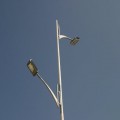 2009-12-18
2009-12-18
In recent years, cross-strait development of various types of LED streetlights have been booming, particularly in 2008, when Taiwan and China both initiated several LED streetlight demonstration projects, spurring the growth momentum of LED industry.
Continue reading →
2009-07-24
Full-color LED video display screen has become popular in recent years for various applications such as indoor/outdoor commercial advertisement, stadium billboards, traffic message signs…etc. Thanks to the evolution of LED technology which enables lower cost, higher luminance, uniform wave-length and better efficacy LEDs available, the LED display screen makers are able to build high quality display screen with cheaper cost.
Continue reading →
2009-07-24
Encapsulation is generally adopted in packaging of lamp-LEDs. The encapsulation procedure is to pour liquid epoxy into the LED moulding chamber first, and then insert the LED bracket that has undergone the press welding, then put the mould into the oven, and the LED gets shaped when the epoxy solidifies.
The procedure of encapsulation sounds rather simple, while the following points should be paid attention to:
Continue reading →
2009-07-09
QFN Packaging Solves The Heat Dissipation Problem of LED Display
Currently, almost all LED display manufacturers face the problem of heat dissipation during PCB design, with the thermal effect of drivers disturbing the normal light emitting property of LED and further influencing the color uniformity of the overall display. This article will illustrate how headaches can be prevented by changing the packaging of driving chips.
Continue reading →
2009-05-05
LED digital display is a semi-conductive lighting component, with light emitting diode (LED) as its elementary unit. By the number of segments the digital display is made of, there are 7-segment digital displays and 8-segment ones, with the latter with one more LED unit (also displays one more decimal point) than the former. By the number of the figure “8” displayed, there are 1-digit, 2-digit, 4-digit LED digital displays and so on. And by the way in which the LED units are connected, there are common anode digital displays and common cathode digital displays.
Continue reading →
2009-03-18
The thermal resistance of a material is its resistance against thermal conduction. The unit of thermal resistance is degree per watt, representing the temperature difference across a structure when a unit of heat energy flows through it in a unit time. After the LED is lighted and the thermal conduction stabled, as every watt of power on the chip surface being consumed, the temperature difference between the PN junction and the linking bracket or heating panel is the thermal resistance value of the LED.
Continue reading →
2009-03-18
Silicon carbide is also called "emery powder" or "refractory sand." The usual manufacturing process of SiC is to combine silica sand, tar (or coke), woodchip (and salt when manufacturing green SiC) and other materials in an electric resistance furnace at a high temperature. Silicon carbide is usually divided into two categories, the black SiC and the green SiC, both having a hexagonal crystal structure, a density of 3.2 -3.25g/cm³ and microhardness of 2840-3320kg/mm2.
Continue reading →
 2012-02-23
2012-02-23
 2012-02-17
2012-02-17
 2012-01-13
2012-01-13
 2012-01-13
2012-01-13
 2012-01-09
2012-01-09
 2012-01-03
2012-01-03
 2012-01-03
2012-01-03
 2012-01-03
2012-01-03
 2011-12-23
2011-12-23
 2011-12-14
2011-12-14
 2011-11-25
2011-11-25
 2011-10-31
2011-10-31
 2011-09-02
2011-09-02
 2011-03-24
2011-03-24
 2010-05-28
2010-05-28
 2010-05-06
2010-05-06
 2009-12-18
2009-12-18